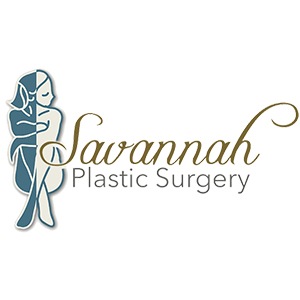Are you thinking about having your breasts augmented, but aren’t sure what type of breast implants will suit you best? There are so many breast augmentation options, it can feel overwhelming to make a decision that’s right for your body and the look you want. And, while size is important, there’s more to consider when choosing the best breast implants for you. Shape and profile matter too. Learn about the different types of implants available and how they work to change the size and shape of the breasts.
Implant Types: Saline vs. Silicone
 The material your breast implants are made of affects both how they look and how they feel. Your two main breast augmentation options here are silicone and saline. Both have a high safety profile and are FDA approved.
The material your breast implants are made of affects both how they look and how they feel. Your two main breast augmentation options here are silicone and saline. Both have a high safety profile and are FDA approved.
Silicone Implants
Silicone breast implants are silicone shells filled with silicone gel. Many women favor silicone gel breast implants because the thick gel feels similar to natural breast tissue. Another advantage of silicone is that if an implant ruptures, it typically holds its shape rather than deflating. This tendency can also make it somewhat difficult to tell if an implant rupture does occur. This is why many surgeons recommend women have periodic checkups to confirm their silicone implants are healthy and intact.
You may have heard of “gummy bear implants.” They’re actually highly cohesive silicone implants. “Cohesivity” refers to how thick the silicone gel is. The name is a reference to gummy bears and how easily they hold their shape. Because the gel in highly cohesive implants is thicker than standard silicone, these implants hold their shape better than other implants, but still have a natural feel.
You can work with your plastic surgeon to choose the level of cohesivity you’d like: gummy, gummier, or gummiest.
Saline Implants
Saline breast implants consist of a silicone outer shell filled with a solution of sterile saline (saltwater). While these implants don’t feel as natural as silicone, many women choose them because of the properties of saline. In the event of an implant rupture, the body safely absorbs saline with no side effects. The downside to this is that if an implant ruptures, it quickly loses its volume as the saline is absorbed.
An alternative to the standard single-chamber saline implant is the IDEAL IMPLANT®, which is a saline implant with "baffles" inside. This makes IDEAL IMPLANTS feel more natural than standard implants.
Breast Implant Size, Shape, and Profile
When it comes to breast implant sizes, it’s time to look beyond cup size. A few important things work together to give your implants their final look, including:
- Volume
- Diameter
- Shape
- Profile
- Placement
All these things contribute to how much projection the implants have, how full your new breasts will be, and how natural they’ll look.
There’s also your own body shape to consider, as this affects what size and shape of breast implants are right for you. A plastic surgeon will consider:
- Your natural breast size and base width
- Your height
- Your build
In general, the larger your frame, the more implant volume you’ll need to achieve a certain cup size.
Volume and Diameter
Volume is perhaps the most important thing to consider when choosing your implant. Implants are measured not in terms of cup size, but in volume and diameter. Volume is usually expressed in cubic centimeters (ccs), which is the same as milliliters (mls). The higher the ml count of an implant, the bigger it is.
Another important measurement for breast implants is diameter. This is how wide the implant is at its widest point. In general, an implant diameter that is similar to or complimentary to the base width of your natural breast will give the most natural result. Many plastic surgeons suggest that you pick the volume first—because it’s most important—then the diameter that most compliments the base diameter of your breasts.
Teardrop vs. Round Implants
Breast implants come in two different shapes:
- Round
- Teardrop (anatomic)
Round implants are circular in shape. They have the same amount of fullness all the way around that circle.
Teardrop breast implants are shaped like their name sounds. They have an upper half and a lower half. The lower half of the teardrop implant is fuller than the upper. This means when the implant is placed, the breast has more fullness in the area below the nipple.
Teardrop implants tend to give the breasts a more natural-looking appearance, while round implants give more fullness to the bustline.
Note: Teardrop implants have a textured surface and are not currently being used as often while the safety of textured surfaces is further investigated.
Breast Implant Profiles
Profile is another element to consider when thinking about breast shapes and your breast augmentation options. The term “profile” refers to two things:
- How wide and tall they are (diameter)
- How far they project outward from the body (projection)
Generally, there are three profiles you’ll hear about from your plastic surgeon:
- High – Implants with a high profile are rounder than the other profile types and have the most spherical shape. They have the highest level of outward projection, so breasts look fuller and more dramatic.
- Moderate – Implants with a moderate profile are flatter and less rounded than high-profile implants. The moderate profile looks natural on most women.
- Low – Low-profile implants are the widest and flattest of the three profiles. They tend to be best for women who want a softer-looking bustline, or who have larger frames. They may be too wide at the base for women with a petite body type.
In general, the more rounded the breast implants are, the higher their profile.
Specific profile choices have increased greatly over the last few years. Two of the largest manufacturers of breast implants in the U.S. are:
- MENTOR®
- Allergan
MENTOR offers six profiles (from lowest projection to highest):
- Moderate profile Classic
- Moderate profile plus
- Moderate profile plus Xtra
- High profile
- High profile Xtra
- Ultra profile
Similarly, Allergan offers five profiles (from lowest to highest):
- Low profile
- Low plus profile
- Moderate profile
- Full profile
- Extra full profile
Your surgeon will help you understand the best option for the look you want.
Implant Placement: Over or Under the Muscle?
When a surgeon places implants into the breasts, they can put the implants either over or beneath the pectoral muscles of the chest. There are some different pros and cons for each type of placement.
Over-the-muscle recovery is faster, and there’s less post-op discomfort, as the chest muscle is unaffected. This placement does have a significantly higher risk of a complication called capsular contracture, which can affect how the breasts look and feel. The placement can also make it more difficult to read mammography results.
One advantage of under-muscle placement is that the muscle provides a cushion between the implant and the skin. This can help the breasts look and feel more natural. In addition, the risk of capsular contraction is lower, and mammography results are easier to read. The trade-off is that post-op discomfort is lengthened by a few days.
Incision Placement
Many approaches have been used to place breast implants:
- Inframammary (near the crease below the breast) – This is the most common incision placement because the rate of capsular contracture is three times lower than the other approaches. It is also the most accessible incision if reoperation is needed.
- Periareolar (around the nipple) – This is used occasionally but has decreased because of a higher rate of capsular contracture.
- Transaxillary (through the armpit) – This is used occasionally but has decreased because of a higher rate of capsular contracture.
- Transumbilical (on the upper-inside edge of the belly button) – This has largely been abandoned because of the lack of pocket control and the lack of warranty coverage.
Your procedure will more than likely involve an inframammary incision, but if you have questions about other incision types, don’t hesitate to ask your surgeon during a consultation.
Your Breast Augmentation Is Customized to You
For many women, one of the best things about getting breast implants is the ability to choose what their new breasts will look like. Whether you want natural-looking breast implants or a dramatically full bustline, the choice is yours. With breast augmentation options like material, profile, and more, your final result will be customized to you. And when your surgery and recovery period are over—and your breasts look as great as you dreamed—there’s nothing like the confidence of knowing that you look your best.
Because there are so many types of breast implants, every woman who wants this surgery can find the size and shape that suits her best. Talk with a surgeon about your breast augmentation options to find out what works best for your body and your desires!

